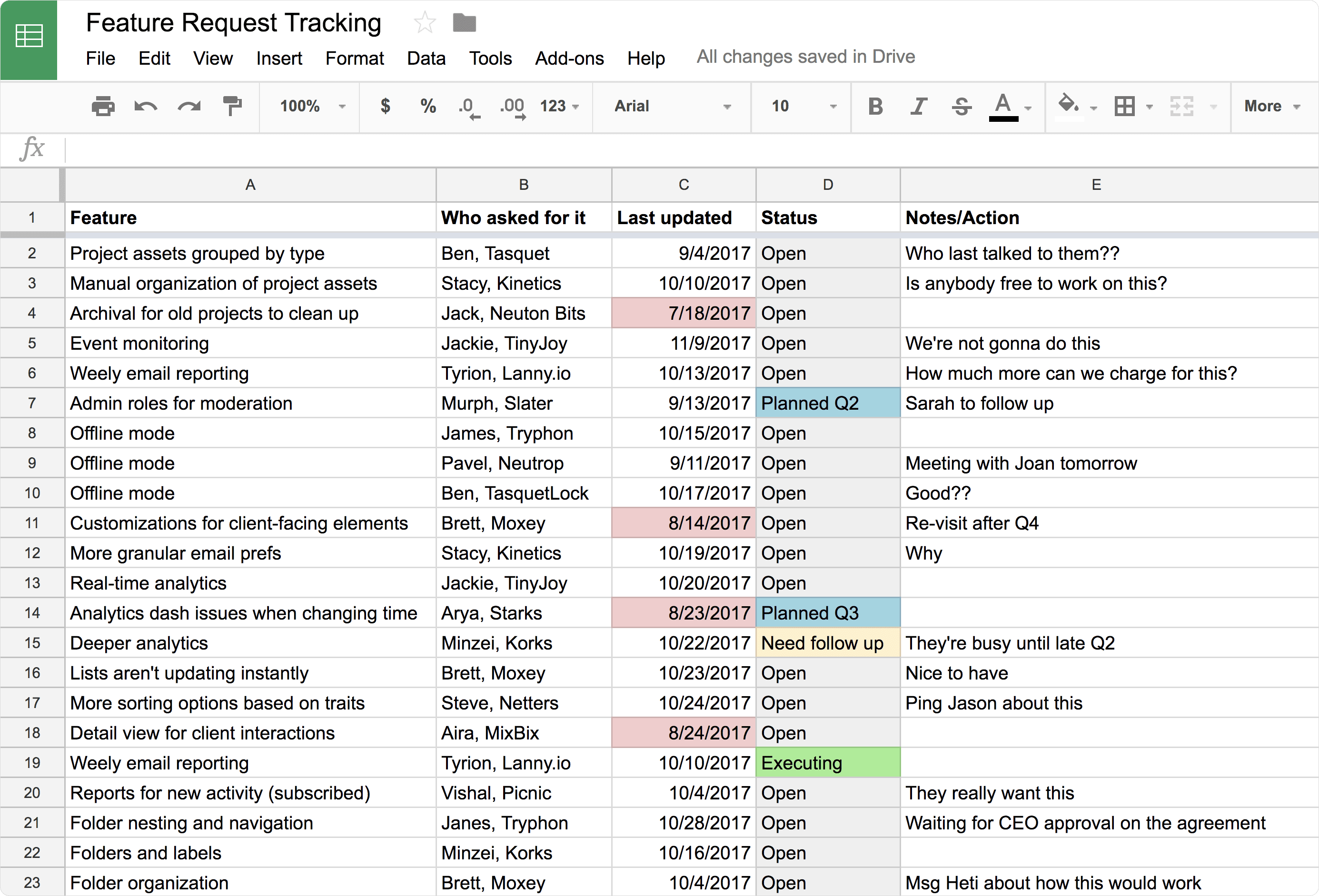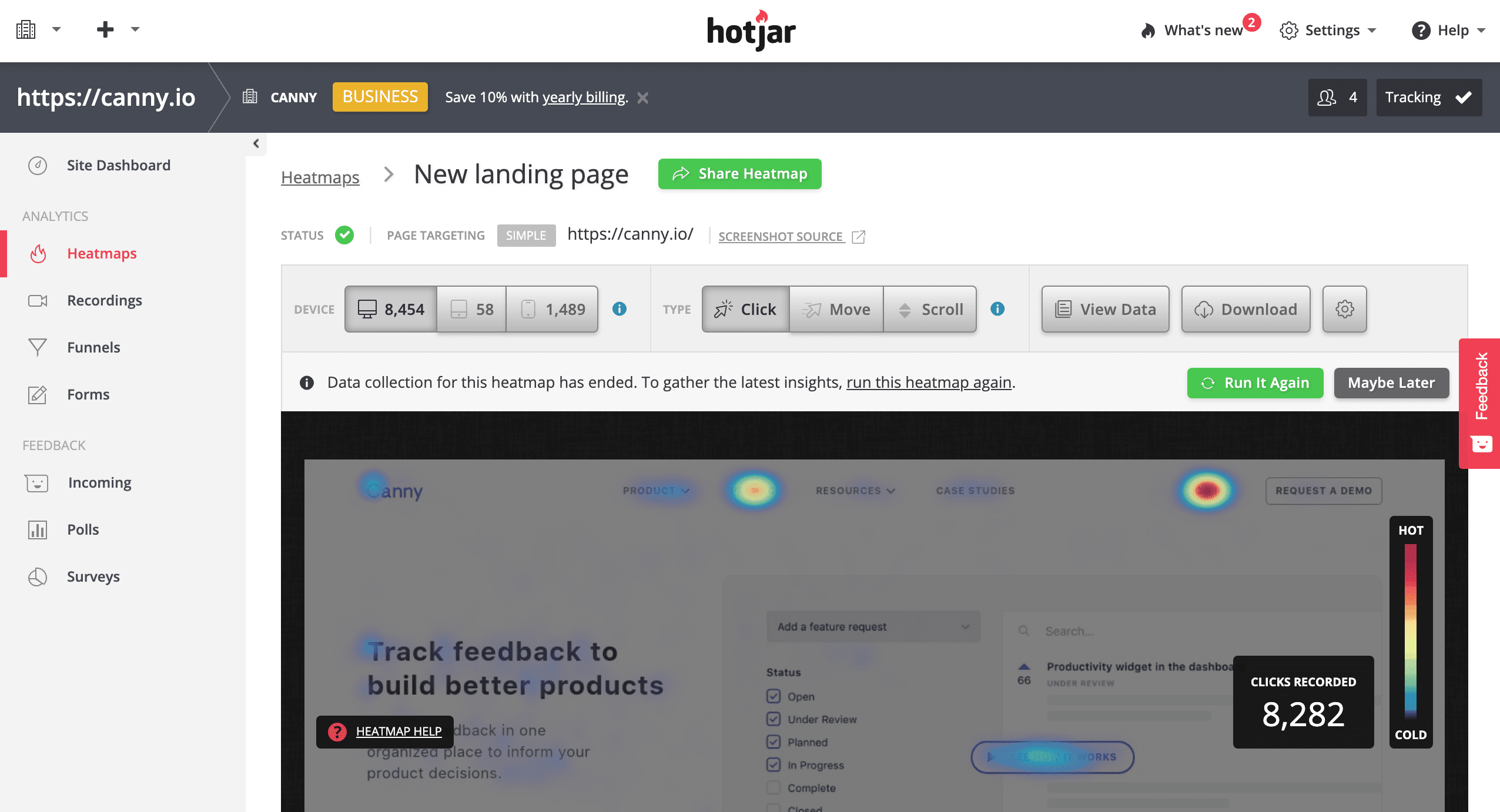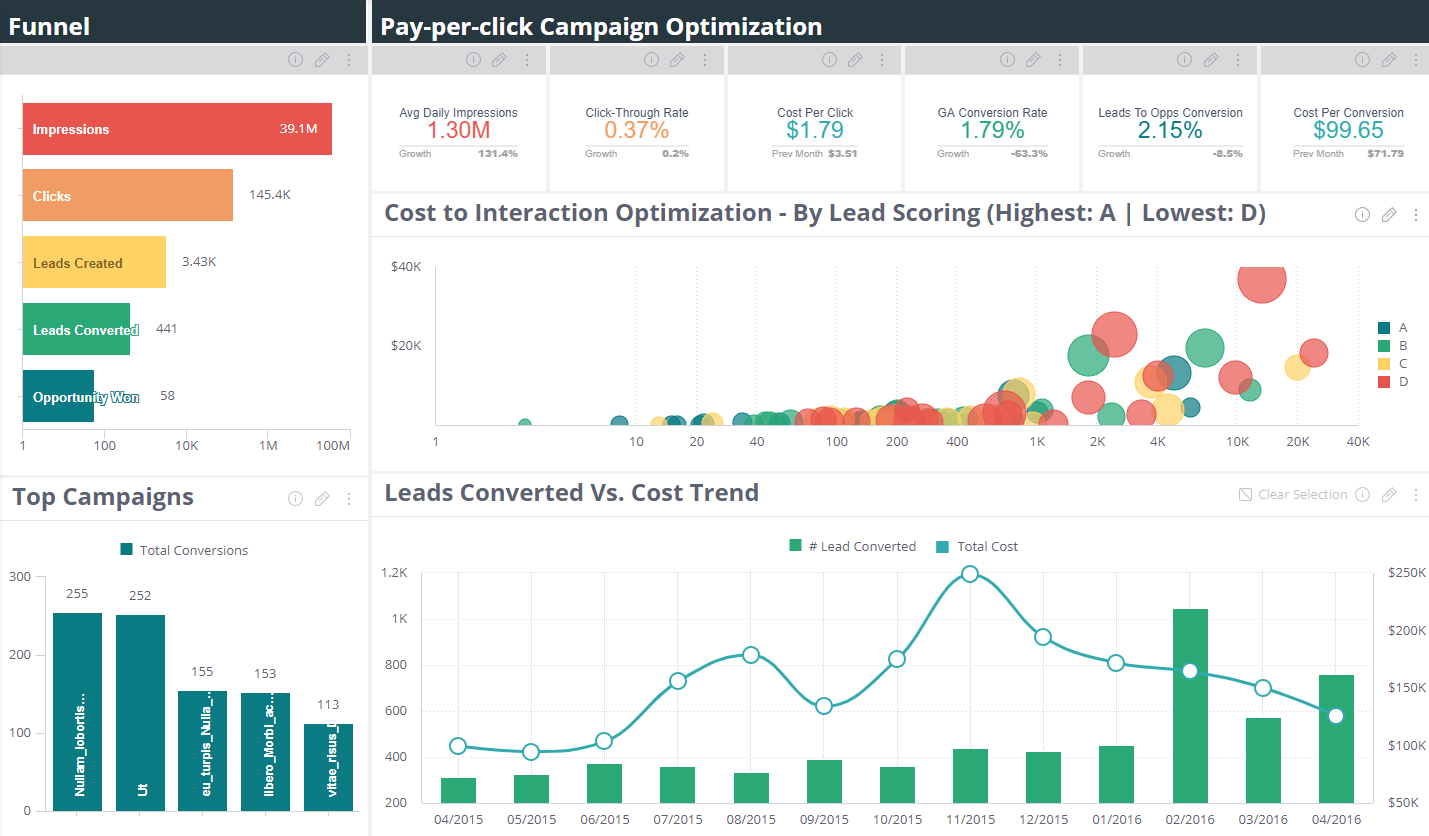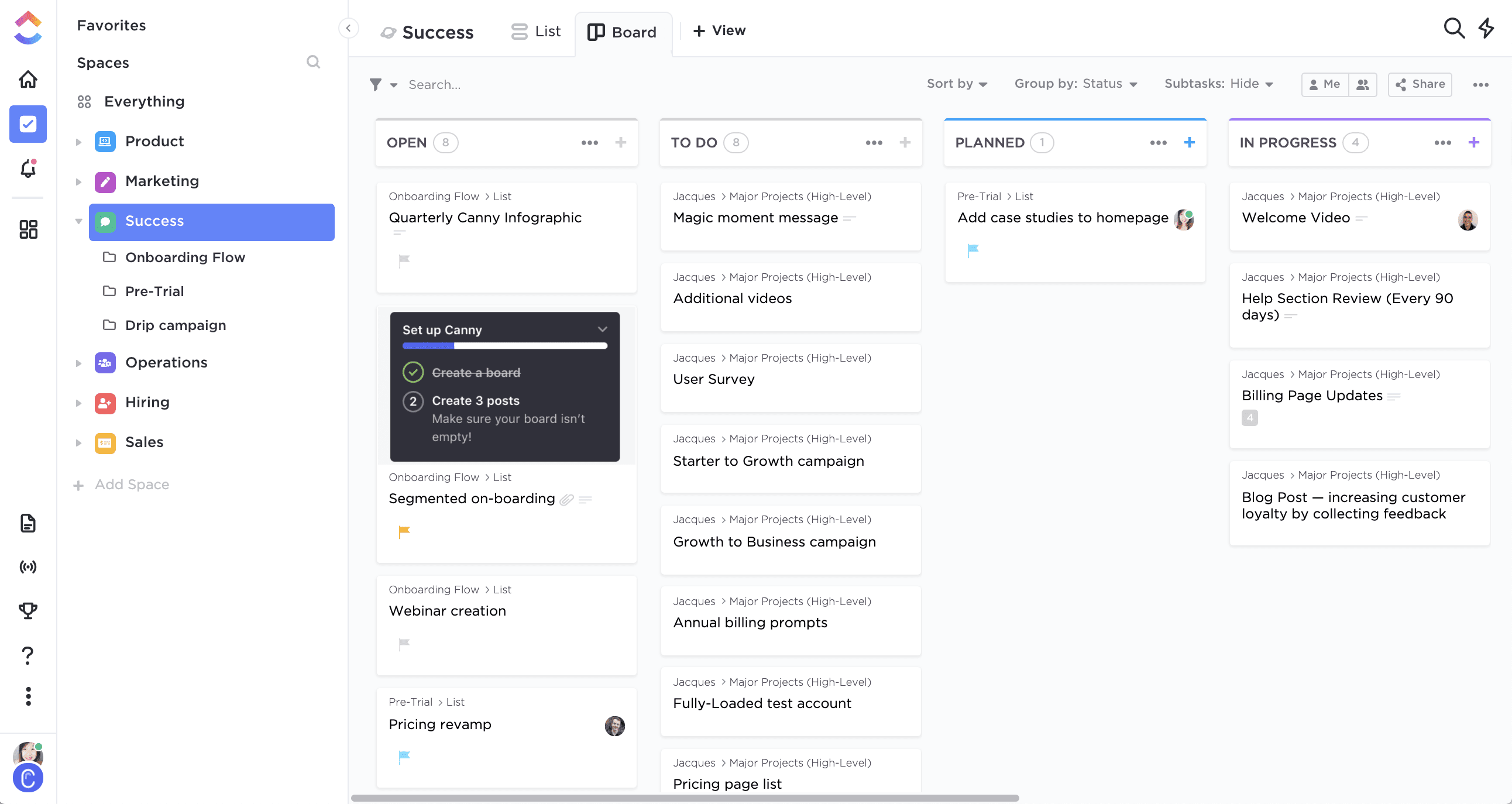I’ll come out and say it:
A lot of companies—specifically tech companies—over-engineer their processes.
It makes sense: There is a tool to automate, track, and facilitate just about everything you can possibly imagine. If you’re in an industry where adopting new tools is standard, it’s natural to want to try something that might help your workflow.
Plus, there’s always the appeal of a shiny new toy.
But, the result is often a “tech stack” that’s unnecessary at best, and a waste of time, money, and energy at worst.
Do we really need this tool?
The reality is that a lot of incredibly useful SaaS tools aren’t essential.
That is to say, you can get by and cobble together a process without them.
The challenge is figuring out if something genuinely makes processes easier and better, versus complicating things unnecessarily.
Take Canny, for example. (Yeah, I’m asking if our own tool is necessary. We’re feeling bold today.)
Will you still get customer feedback without a tool like Canny in place? Of course. Your customers will tell you what they think, whether you ask them for feedback or not.
But, a tool like Canny makes the feedback process easier, faster, and smoother for both you and your customers. It takes a cumbersome, blind-leading-the-blind approach, and makes it simple and organized.

Now, if you don’t have enough customers yet, Canny might be overkill. A tool for managing feedback might not be necessary (yet!) when you aren’t dealing with a high volume of feedback.
That said, I’d argue that you do need a tool like Canny if you’re getting enough feedback and feature requests that you’re ending up with something like the spreadsheet above. In that case, you need to make the process of collecting and managing customer feedback easier.
It’s an example of a tool that makes a process better, rather than simply adding another layer of complexity.
What’s the problem with too much tech?
Too much tech becomes a problem when:
- You’re collecting information for the sake of it. This muddies the waters and makes it harder to home in on what actually matters.
- A tool is used just because it exists. This complicates processes and adds unnecessary steps. It’s a waste of time.
- You’re spending money on something you don’t need. If you’re bootstrapped and trying to stay relatively lean (or just don’t want to waste money), this is an obvious issue.
- It creates unnecessary silos. If each org uses different tools, this can make things more confusing rather than easier.
Not everything needs to be automated. Not every data point adds value or informs decisions. You really don’t need a piece of technology for every aspect of your process.
Let’s dig into this more, and talk about some ways to identify if something is actually a valuable addition to your tech stack.
Do we need a tool for this? A step-by-step evaluation process
Ask yourself the following questions to determine if your process needs improvement and if a new tool would help.
If not—I hate to break it to you, but you might just be addicted to shiny new tech. (It’s okay. We understand. We’re forming a support group.)
1. Would a tool allow me to access information I couldn’t otherwise?
We use Hotjar at Canny. Without it, we simply wouldn’t have access to specific, valuable information.
Things like how users move through the site, and where they spend the most time—these are insights we literally couldn’t get without using a tool. It’s information that will help us make calls about how to structure our website, pages we need to build, and so on.

We can’t manually gather this info. It isn’t available without a specialized piece of tech.
So, Hotjar falls into the “necessary” category because it gives us info we couldn’t get otherwise. It’s a tech solution to a problem you can’t solve without specialized tech.
Start by asking:
- Are we actually doing something with the data we’re collecting? If not, why are we collecting it?
- Is there another way to get this data point or piece of information?
- Why or why not?
- What would it look like to gather that info in a different way?
Don’t focus on questions around time investment or difficulty now—we’ll get to those later.
2. Could I share this information or data point manually, without a tool?
Take, for instance, a really nice marketing dashboard.
You pipe in info from your analytics tools, and it populates for you, complete with graphs and visuals.
Great. Fancy.

But could you convey this info in a more lightweight way, without a dashboard?
You probably could.
Now, doing so might be a ton of work, a waste of time, and it might not match the audience you’re presenting the info to (we’ll get into all those considerations later).
But, if you just need one or two data points (and a fancy presentation isn’t hugely important), manually grabbing them from your analytics tool might be fine.
You might ultimately decide that automating this process is still the way to go—but it’s smart to evaluate if it’s truly worth it, or if you can do the thing manually.
3. Is doing this manually/without a tool a significant drain on my time, brainpower, and overall will to live?
So, you can get by without a tool—but it might suck.
At this point, it’s important to get a sense of the relative effort you’re expending by not using a tech solution to solve the problem.
Going back to my marketing dashboard example:
I don’t need a dashboard solution if all I need to do is go into Google Analytics once a month and pull, say, our total pageviews for the Canny blog. That’s maybe five clicks, two minutes, and one metric.
But, if I need to pull several different metrics, cross-compare them over periods of time, and flip between settings, it becomes a lot more time-consuming.
Effort expended is relative. But, if you’re considering a new tool, it’s a good idea to log the amount of time you’re taking to do the task without one and see if it feels reasonable.
If it’s becoming a significant time-suck (or just mentally exhausting you), a tool might be a good idea.
4. Will other team members be working on this/need access to this information?
Is this something that you’ll be working on with other members of your team? Will a tool help you organize things so that everyone can work collaboratively, document information so that you all have access to it later, and so on?
If so, a piece of tech to help you manage this process might be a good idea.

We like to use ClickUp for collaborative work. Everyone can work within the tool together, and it’s easy to keep track of where a project is at certain stages, and who is responsible for what.
It makes it easier to work together, especially as a remote team:
If multiple people are involved in the same project, it’s nice to have a shared tool to keep everyone on the same page.
-Sarah
But, on the flip side, if you’re the only person involved, it’s worth asking if a new, specific tool is necessary.
5. Does the presentation (and level of effort) match the audience?
A pretty presentation is a perfectly valid reason to invest in a piece of tech—if someone else is going to see it.
I love a pretty thing. But, my personal to-do list? Doesn’t necessarily need to be pretty. No one sees it but me. I’ve tried apps like Todoist, and for me, they’re form over function. It takes too long, and the upside just isn’t there.
Questions to ask:
- Do customers, external stakeholders, or similar “outsiders” need to access this info?
- Will it reflect better on your business if you use a tool that presents info in an attractive, cohesive way?
If so, it might be smart to invest in a tool that is aesthetically-pleasing and offers a nice presentation.
If it’s a quick update you’re giving in a monthly meeting, you probably don’t need a flashy tool just to impress your team.
Choose your tech stack deliberately
Specialized tools are great and can help you do things faster and more clearly.
But, sometimes you don’t need a tool and it actually complicates the process.
Evaluate the need and benefit that a new piece of technology will bring before investing time and effort into it. What’s the tradeoff? What do you lose by not bringing on a tool? What do you gain?
If implementing something will save you 10 minutes a day, and incur a high cost, it might not be worth it. But, if it’ll save significant time, effort, and make it easier to document processes and stay organized as a team? It might be a worthwhile investment.
For more on choosing and implementing tools on your team, check out our recent article on how to get your team on board with new tech. And, while you’re here, check out Canny if you haven’t already—you can try it free for 14 days.







